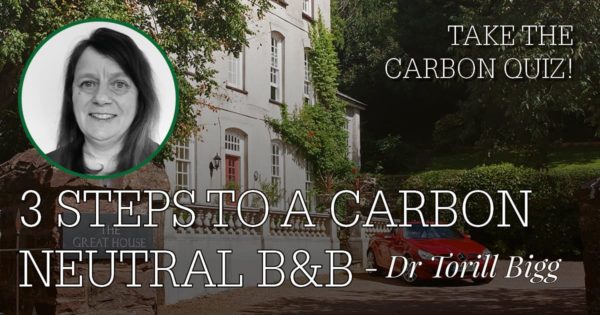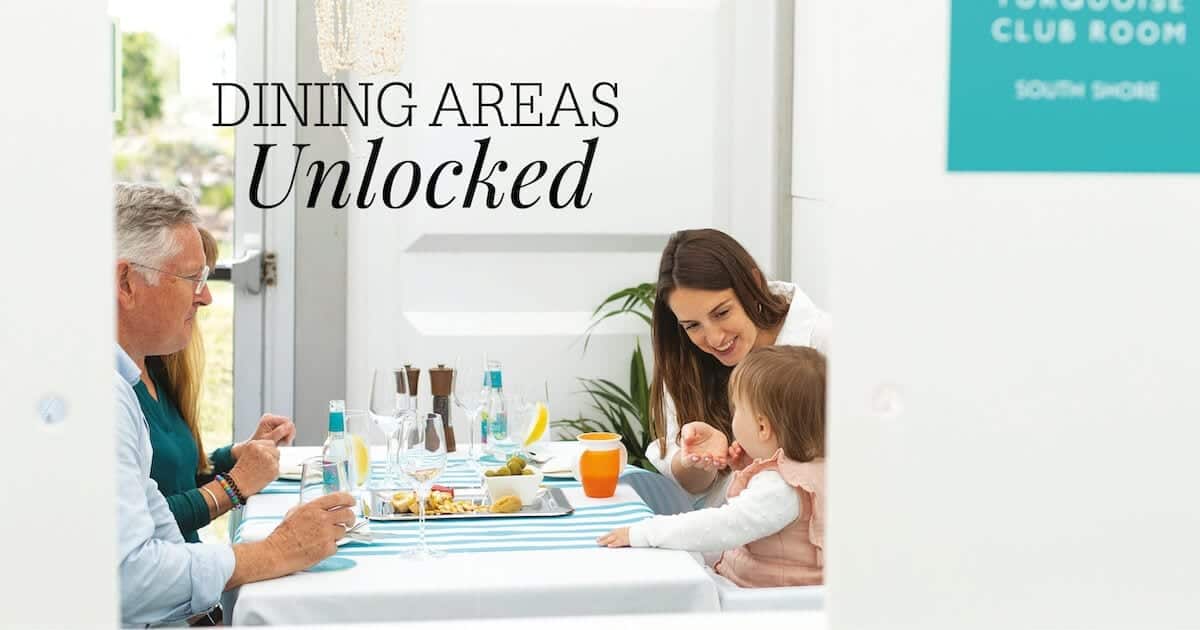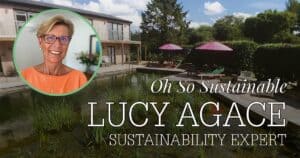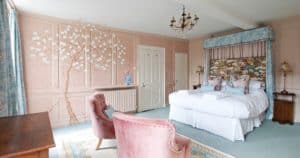
By Dr Torill Bigg – Chief Carbon Reduction Engineer for Tunley Environmental
Bio:
Torill Bigg gained her PhD from Cranfield University researching an environmentally friendly reactor design to treat polluted water using low carbon-emission waste materials. She is a chartered engineer, an accomplished sailor – and a big fan of the staycation and of all things environmental. Dr Bigg is Chief Carbon Reduction Engineer for Tunley Environmental, offering carbon footprints for businesses of any size and carbon reduction engineering. www.tunley-engineering.com
3 Steps to a Carbon Neutral B&B
Consequently, holiday makers are both seeking staycations and are being ever more eco-savvy. We all want a holiday – and we all want to be conscious of the environment while doing it. As customers increasingly expect environmentally responsible products and services, so owners and managers of BnBs, inns, hotels glamping sites and holiday lets are seeking a way to provide it.
Awareness of global warming and the climate crisis is at an all-time high. Carbon dioxide and other greenhouse gases in the atmosphere, known as carbon, trap warmth from the sun in the atmosphere around us. Global warming is caused by increasing concentrations of the greenhouse gases, which is the cause of the climate crisis. And as that very same sun shines down on us our thoughts turn to a break away.
How, though, can you expand your appeal to capture the market for low carbon and environmentally responsible holiday makers?
Step One -measure your business’s carbon footprint
If you would like a slice of that market one of the items on your to do list will be to demonstrate your commitment to environmental responsibility by publicising your carbon reduction efforts. The first step you need is to measure your business’s carbon footprint; There is little point targeting a 90% carbon reduction without an understanding of what that means in real terms. How is a carbon reduction achieved? Are you seeking Net Zero Carbon, or Carbon Neutrality?
A carbon footprint is measured in kg of carbon dioxide equivalents. It can be calculated from your energy use in the form of kwh of gas or electricity, water supplied in cubic meters, materials you use and fuel used in transport of all kinds.
The good news for those looking to show off their environmental credentials in addition to the comfort and service they offer is that BnB and holiday let staycations can offer a low carbon offering from the outset. A typical stay in a UK hotel has a carbon footprint of 16 kg a night. While one night in Spain emits 20 kg of carbon – that’s a planet saving 28 kg of carbon for each week on holiday. And that does not include the travel considerations. That is a carbon-saving extra; Every 100 miles driven in the family car instead of flown by plane saves 15 kg of carbon emissions. But the truly eco-conscious might travel by train, further minimising their carbon emissions.
Step Two -reduce your carbon emissions
Having measured your carbon footprint, step two is to reduce your carbon emissions. There are many ways of doing this, and the answer lies in energy use, water consumption, transport choices and even the food you serve.
If your B and B can offer eco-friendly transport from the nearest train station this would allow guests to travel by train – and give guests the same security of arrival as being met by friends. Why not add solar panels to a roof or to the top of a car port and offer scheduled shuttle by electric minibus? Once you have measured your carbon footprint in kg of carbon, you will be able to publicise the carbon saving this change has made.
In-room kettles could be replaced with one-cup kettles that hold a reservoir of water – but boils only enough for a single cup at a time, saving both water and electricity. These kettles cost around £30 to buy – and they are faster, so you get your brew quicker too. Alternatively, you could supplement the in room kettle with a thermos flask so that boiled water can be kept hot for the next brew without the need to re-boil the kettle, so reducing energy usage – and so reducing your carbon footprint.
You could consider buying low energy standby appliances – such as TVs in rooms that might be left in standby mode while your guests are out exploring the area. This could reduce your electricity usage by as much as 15%. That is 15 kwh for every 100 kwh you buy and pay for. This equates to 3 kg of carbon emissions to the atmosphere. 15 kwh is enough to keep a fridge-freezer running for nearly two days – or an electric blanket on for 15 nights.
Another tip is to check the manuals for your appliances; Using your dishwasher on the eco setting could save you 500 w of electricity for each load – which would power the laptop for ten days.
Offering vegan food too not only provides a wider choice, but it can also attract a larger range of customers and a decrease in carbon footprint. It is perhaps surprising that pork has a carbon footprint that is five times that of a vegan sausage. That is a carbon saving of 334g of carbon per veggie sausage.
Water use has a carbon footprint of a kilo of carbon for every cubic metre of water. If you fit a water butt to collect rainwater you can reduce your carbon footprint and your water bill, by using rainwater to water that meadow and wash the electric minibus too. Other options for carbon reduction from water savings range from full-on grey-water systems to the more accessible low flush toilets fitted with hand sinks above the cistern, so that the wastewater is used for the next flush. Some settings might consider the ultimate eco loo with a compost toilet.
Offer digital receipts and invoices to save paper – paper has a carbon footprint of 900g for every kg, and you could also offer digital breakfast menus – why not introduce digital ordering where the kitchen receives the order online and a welcome breakfast is ready for the guest each morning.
Step Three -route to net zero carbon
Step 3 is carbon offsetting. After emission reduction, this is the route to net zero carbon. There are commercial schemes selling carbon offsetting schemes for a price. These range from tree planting schemes to low methane cattle feed. There are offsetting actions you can complete in house though; Choose natural fibres for bed linens, carpets and curtains. Incorporate natural materials when maintaining and refurbishing, such as wood, hemp and wool. These will create a carbon store within your B and B, reducing your net carbon footprint. And if Net Zero is your target plan, this could be one way to go.
Other options to offset carbon emissions on the road to net zero include planting a wildflower meadow instead of a lawn as that will sequester hundreds of kilos of carbon a year. This will be very pretty and good for wildlife too.
However you choose to address it, an appetite for low carbon holidaying is here and it is growing in popularity.
HOW CARBON NEUTRAL ARE YOU?



